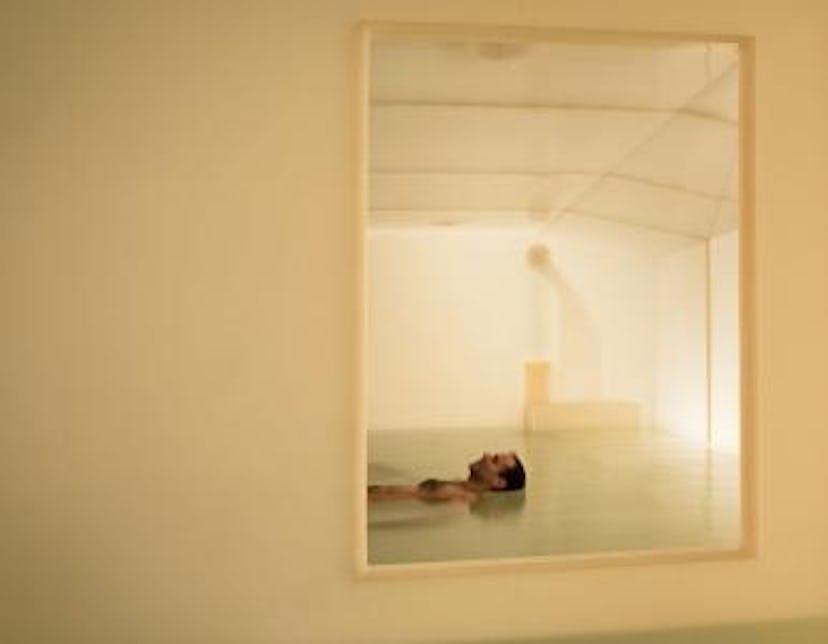Behind the Seen: Carsten Höller at the New Museum
“Experience”, Carsten Höller’s recently-opened survey at the New Museum, is among the most immersive exhibits the institution has ever mounted — literally so, in the case of the artist’s Giant Psycho Tank, a large sensory...

“Experience”, Carsten Höller’s recently-opened survey at the New Museum, is among the most immersive exhibits the institution has ever mounted — literally so, in the case of the artist’s Giant Psycho Tank, a large sensory deprivation pool resembling a lunar module, in which visitors can float weightlessly in a tank of water.
Giant Psycho Tank
Upon entry to the show, a series of legal waivers are the first indication that curator Massimiliano Gioni and Höller have much more in mind than mounting a hum-drum mid-career retrospective. The Back To The Future-esque ‘Upside-Down Glasses’ that are handed over, once you’ve surrendered a credit card, confirm that you’re not in Kansas, or the Met, anymore.
The largest show to date of Höller’s work in America, “Experience” spans the museum’s four gallery floors, imbuing the SANAA-designed building with a carnival-like atmosphere. The journey begins in the glass-walled gallery at the rear of the ground floor, which houses a series of ascending spliced mushroom sculptures. Viewed through the looking glasses, they provide a substance-free psychedelic experience.
Untitled (Slide), 2011
While the third and fourth floors are stocked with a series of attractions, such as one of the artist’s famous tubular steel slides, Untitled (Slide), for which the museum had to cut through two concrete floors in order to install, and his slow-mo Mirror Carousel — the second floor is where the trip gets most intense. Höller’s dizzying strobe-effect light installation, titled Double Light Corner, creates the impression that the room is moving, while an exotic menagerie of neon polyurethane creatures that make up Animal Group nap on the ground with their eyes open. Around the bend, Aquarium invites viewers to rest their heads in the interior space of the tank, allowing for a fish’s eye perspective, and creating an unexpectedly touching identification with the school of ides swimming around.
Mirror Carousel, 2005
The length of rooms to the right of the tank, a reiteration of the artist’s Experience Corridor, each contain a different self-administered experiment, the highlights of which include Love Drug (PEA), a vial of phenethylamine that can be unstoppered and sniffed, and The Pinocchio Effect, a vibrating implement that, when applied to the bicep or tricep, purports to create the feeling that one’s nose is growing. Some experiences didn’t ‘work’ as expected for many visitors, but this potential disconnect is essential to the show’s methodology, which upsets the dictatorial order that characterizes most museum exhibitions. The artworks on display aren’t there to be venerated — they’re intended to be played with, and in the process, to have their value determined by a personal litmus test.
Giant Triple Mushrooms, 2010
The adjective that best applies to “Experience” is rarely applicable to contemporary art: Fun. Höller demystifies his practice by imbuing his work with a generous dose of childlike wonder, over-and-under stimulating our sense organs in order to gently destabilize our perceptions and expectations. It’s rare to see a museum-going crowd so engaged with, and empowered by an exhibition. Perhaps the show’s greatest gift is its emphasis on the viewer’s role as co-creator of his or her own reality. “Experience” is what we make of it. Instead of shining a spotlight on his own artistry, Höller celebrates ours.
Sameer Reddy is an artist based out of New York City. sameerreddy.net
Photos: Benoit Pailley